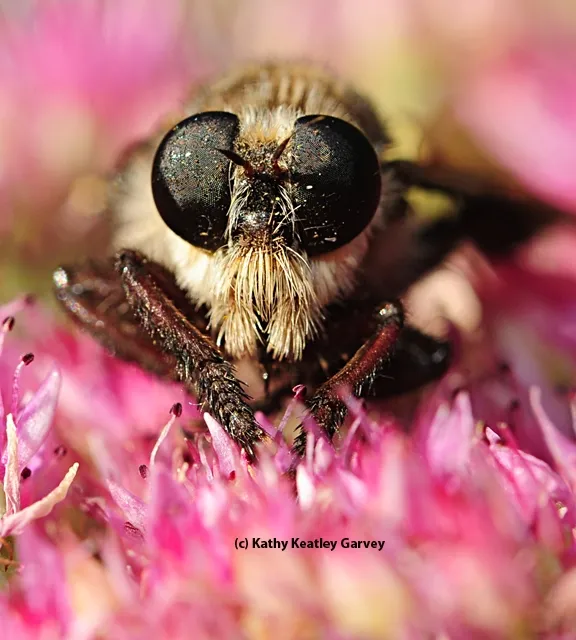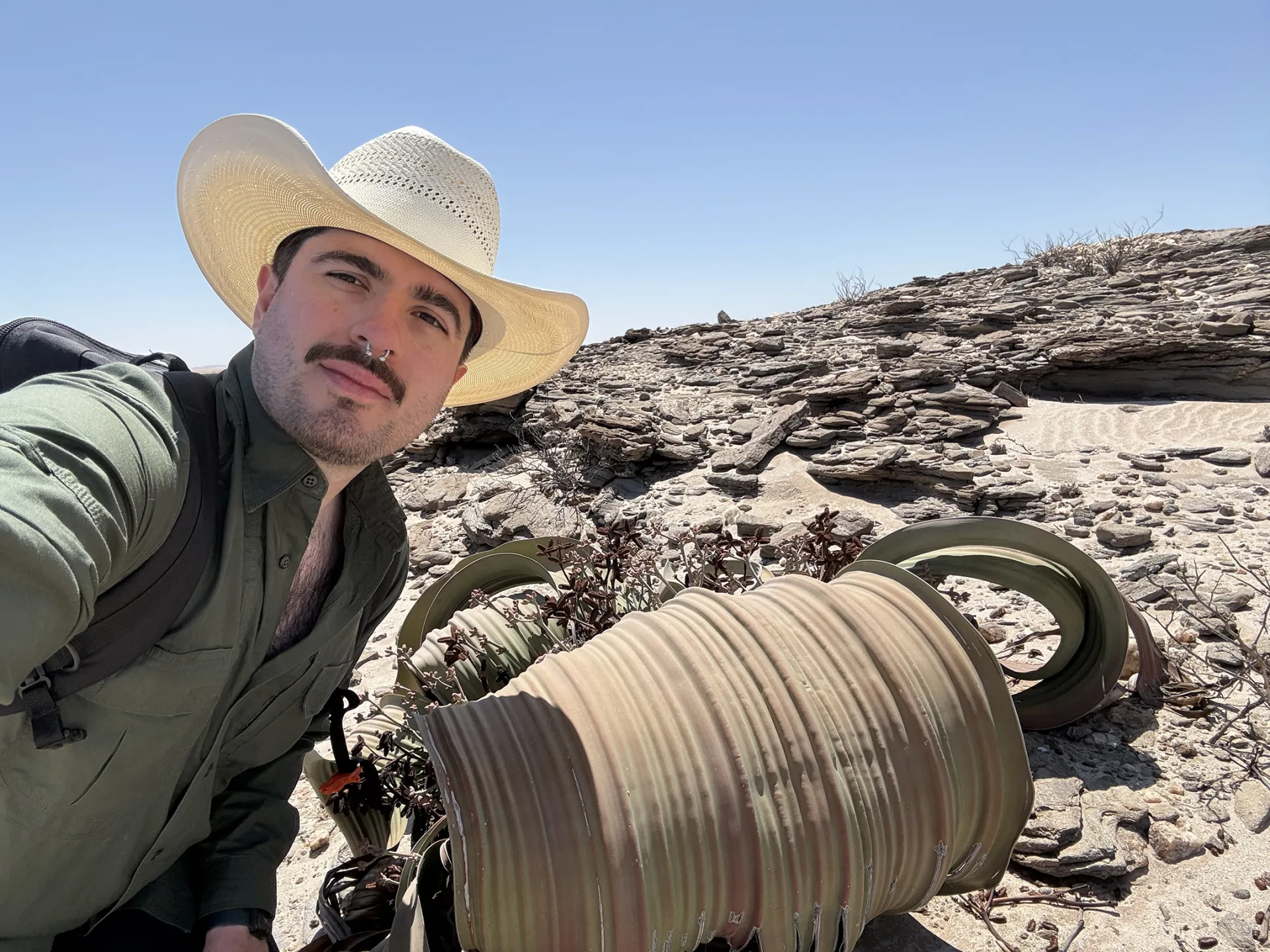'Fly Fun' Is Underway Through May 6

If you missed World Robber Fly Day on Wednesday, April 30, not to worry.
There's still time to celebrate.
"The first-ever International Fly Week started April 30 on World Robber Fly Day and ends on World Bee Fly Day on May 6," said UC Davis alumna Brittany Kohler, research assistant in the lab of ant specialist Phil Ward, UC Davis Department of Entomology and Nemtology. Kohler co-founded Team Diptera, "a group of fly enthusiasts wanting to let people know about the wonderful world of flies, to foster deeper understanding and appreciation."
"The idea is that every day is posting/sharing anything about flies from science to art, it’s Diptera inclusive all week!" Kohler said.
One of the celebrants is Charlotte Alberts, a UC Davis doctoral alumna and research associate at the Smithsonian. She studies robber flies (Diptera: Asilidae), also known as assassin flies.

"Unfortunately, I didn't do much to celebrate on April 30 because I’m in the midst of packing for our move to New Hampshire," she wrote in an email.
But she did walk in a nearby forest to try and find some robber flies. "Flies play a vital role and are often underappreciated or misunderstood," she wrote on her Facebook page. "I hope I can help change people's perceptions and appreciate their significance and beauty,"
On the annual World Robber Fly Day, Alberts often posts images of her son, Griffin, who has basically grown up with robber flies since his birth iin 2020. His crib even contained a robber fly, a gift crocheted by arachnologist Rebecca Godwin of the Jason Bond lab at UC Davis and now a member of the.faculty of Piedmont University, Demorest, Ga.
In true entomological form, Griffin loves searching for insects and spiders in his family's backyard, and listening to his parents read him such books as "An Introduction to Robber Flies and Their Allies of the Southwestern United States" by Rick Rogers.
Now, at age 5, he also knows--and pronounces well--the scientific name.
Globally, there are more than 7500 described species of robber flies. Most people have neither seen nor heard of the insects. "This anonymity is probably due to a variety of reasons," Alberts says. "Many people call them assassin flies because of their tendency to look like other insects, in particular, wasps or bumble bees." They are also territorial, with one or two individuals in a given area. "It can take a while to find your first robber fly, but once you do, you will start to see them all over the place!"
"I caught my first assassin fly in the palm of my hand! Because they are top predators in their world, they are not very fearful of people. I routinely have had them perch on me to hunt prey. But be careful, some of the larger assassin flies can pierce the skin with a defensive bite if they are aggravated enough. Their bites have been compared to a honey bee sting."

Alberts points out that "All insects play essential ecosystem roles that directly or indirectly affect our daily lives, whether through pollination, population control of pests, decomposition, product production, and more. Insects, and especially flies, face a stigma that is difficult to overcome. Assassin flies are a fantastic, charismatic example of a family of flies that are generally unknown by the public and yet is one of the most speciose and helpful in pest population control. I have regularly played with the idea of keeping a couple as house pets to control the other unwanted flying insects that make it into our house."
UC Berkeley doctoral alumus Allan Cabrero, a genomics and bioinformatics postdoctoral fellow at the Smithsonian, also celebrated the insect on World Robber Fly Day,
"I celebrated World Robber Fly Day by posting some photos of Asilids I have come across in my field work and sharing the work of others," he said. "I think among dipterists and insect enthusiasts, robber flies are relatively well known but the broader public aren't as familiar with them and what they do."
"They are the third largest fly family at around, more than 7500 species, and are important aerial predators," Cabrero said. "They have an incredible diversity of shape and sizes. Some mimic and hunt bees, while others specialize in hunting spiders. They use their amazing eyesight to spot prey, then they stab them with their proboscis which injects a paralyzing venom that also aids in digestion."
His robber fly image appears on the cover of Bug Squad.

